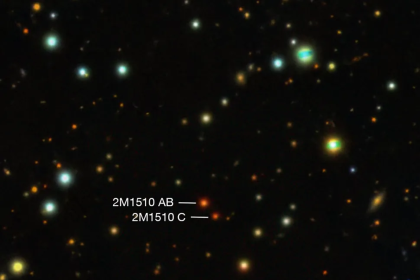New research by American and Canadian scientists shows that the carbon in our bodies has left the galaxy and been transferred to the cosmic conveyor belt.
According to RCO News Agency, Life on Earth could not exist without carbon, but carbon itself cannot exist without stars. Almost all elements, including carbon, oxygen, and iron—except hydrogen and helium—exist only because they were formed in stellar furnaces and ejected into the universe after the death of their stars. In a final act of galactic recycling, planets like ours form by incorporating star-forming atoms into their composition; Whether it is iron in the core of the earth, whether it is oxygen in its atmosphere or carbon in the bodies of earthlings.
According to Fiz, A group of American and Canadian scientists recently confirmed that carbon and other star-forming atoms aren’t just drifting through space to prepare for new uses. In galaxies like our own solar system, which are still actively forming new stars, these atoms take an orbital journey. They orbit their home galaxy in large streams that extend into intergalactic space.
These streams are like giant conveyor belts that push material out and back into the galaxy, where gravity and other forces can gather the raw material into planets, moons, asteroids, comets, and even new stars.
Samantha Garza, a doctoral student at the University of Washington, said: Think of currents as a big train station that is constantly pushing materials out and pulling them in. The heavy elements that make stars are pushed out of their host galaxy and after the death of their supernovas, they make their way to the surrounding environment of the galaxy to finally be pulled inward there and continue the cycle of star and planet formation.
“Jessica Werk” (Jessica Werk), a professor at the University of Washington and head of the astronomy department of this university, said: “The consequences of the evolution of galaxies and the nature of the carbon deposits in them is an exciting topic for the formation of new stars.” The carbon in our bodies has likely spent a significant amount of time outside the galaxy.
In 2011, a group of scientists first confirmed the theory that star-forming galaxies like ours are surrounded by a galactic circumstellar medium, a large cloud of circulating material consisting of hot, oxygen-enriched gas. Garza, Work, and their colleagues found that the galactic environment of star-forming galaxies also circulates lower-temperature materials such as carbon.
“We can now confirm that the galactic environment acts like a giant reservoir for carbon and oxygen, and at least for star-forming galaxies, we can say that this material is re-entering the galaxy to continue the recycling process,” Garza said.
Studying the galactic environment can help scientists understand how this recycling process, which eventually happens to all galaxies—even our own—winds down. One theory is that the reduced contribution of the galactic medium to the recycling process may explain why the stellar population of a galaxy declines over long periods of time.
If the cycle continues—material is pushed out and pulled in again—there is theoretically enough fuel to continue the star formation process, Garza said.
In this project, the researchers used the “Cosmic Origin Spectrograph” in the “Hubble Space Telescope”. The spectrograph showed how the light from nine distant quasars, which are the universe’s extremely bright light sources, is affected by the galactic surroundings of 11 star-forming galaxies.
The Hubble data showed that some of the quasars’ light is absorbed by a specific component in the galactic medium. This particular component is a large amount of carbon. In some cases, researchers have discovered carbon that extends almost 400,000 light-years into the intergalactic space.
Future research will focus on quantifying other elements that make up the galactic environment and comparing the differences in their compositions between galaxies that are still forming large numbers of stars and galaxies that have largely stopped forming stars. Findings from these studies could shed light not only on when galaxies like ours migrate into star deserts, but also why.
This research was published in “The Astrophysical Journal Letters”.
end of message
RCO NEWS
















